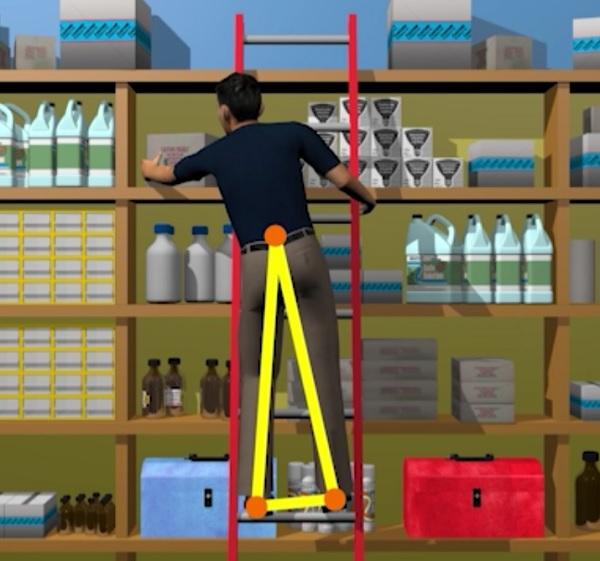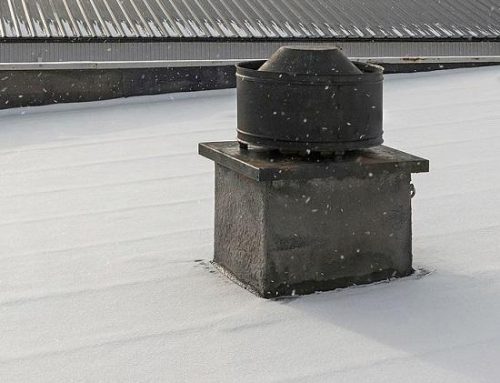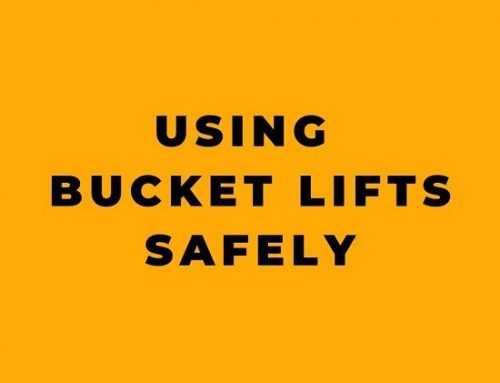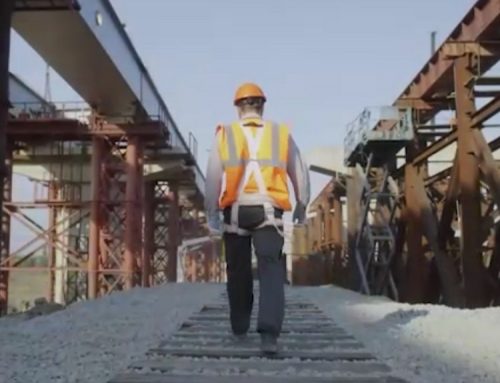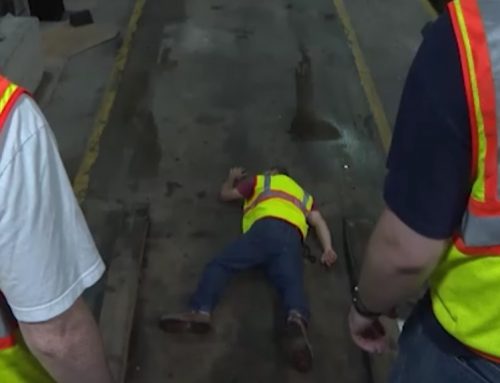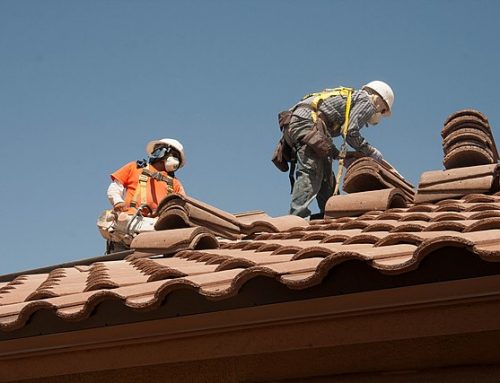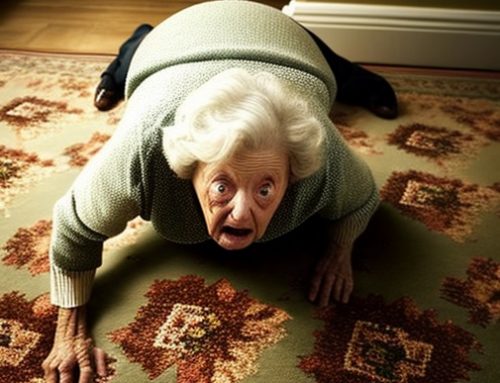Working in an industrial environment comes with many potential hazards, including the risk of slips, trips and falls. In fact, these types of incidents are among the leading causes of workplace injuries and can result in serious harm to employees. This article is adapted from an online workplace safety training course and provides an in-depth look at preventing slips, trips and falls in industrial settings. We’ll explore various causes of these accidents and explain OSHA regulations and best practices for mitigating risk factors. By following the guidelines covered here for housekeeping, floor openings, ladders, scaffolds and more, you can help create a safer industrial workplace.
The Dangers of Slippery Floors
Floors that are coated with slippery substances substantially increase the chances of a slip and fall accident. Some common floor hazards include:
- Water, oil, grease or other liquids that can leak from machinery or be spilled accidentally. Even a small puddle can cause a slip.
- Process wastes like chemicals or wastewater that accumulate on the floor.
- Dry materials such as sawdust, metal shavings, powder or everyday dirt and dust. These can create a slippery surface, especially if they become moist.
- General clutter or debris that finds its way to the floor, including scraps of paper or cardboard, packaging materials or litter.
Any material that comes between your shoes and the floor can potentially cause a loss of traction and balance. So don’t underestimate even minor contaminants.
The Danger of Tripping Hazards
While slippery floors tend to cause slips, “tripping hazards” are objects that obstruct your path and lead to trips and falls. Common industrial tripping dangers include:
- Pallets, tools, parts or other items left on the floor in walkways.
- Extension cords stretched across aisles or work areas.
- Building materials or debris scattered around construction sites.
- Thresholds or flooring transitions that are not flush.
- Uneven floor surfaces or small obstacles you can’t see easily.
Good Housekeeping Prevents Slips and Trips
Many slips and trips can be avoided altogether through orderly work practices and good housekeeping. Keeping floors free of slip, trip and fall hazards should be a priority in any facility. Best practices include:
- Cleaning up spills, leaks and other liquids immediately. Use “Wet Floor” signs until floors are dry.
- Promptly containing and cleaning up grease, oil or process wastes.
- Sweeping up metal shavings, sawdust and other dry debris frequently.
- Placing safety mats at transitions between different flooring types or levels.
- Marking aisles and keeping them free of clutter and obstruction.
- Returning tools, equipment and materials to proper storage areas after use.
- Disposing of unneeded packing materials, pallets and trash properly.
Regular cleaning and organizing to keep floors obstacle-free establishes a safer walking and working environment for everyone.
Guarding Floor Openings
Some floor hazards like tanks, vats and pits are fixed and can’t simply be cleaned up. In these cases, guarding is necessary. Methods include:
- Covering floor openings with a fixed grate or hinged lid. Make sure covers are properly labeled and/or colored for visibility.
- Installing permanent railings with mid-rails and uprights around floor openings and edges.
Guarding with physical barriers is an effective way to prevent slips, trips and falls into hazardous floor openings.
Know the Load Capacities
In industrial environments, it’s common to handle extremely heavy loads. Installing large equipment, storing heavy materials or driving loaded forklifts can put concentrated stresses on floors. Overloading floors beyond their capacity can cause collapse and cave-ins.
Any facility where “floor-stressing” activities occur should have the maximum load rating clearly posted with appropriate signage. This ensures floors are not overloaded.
Mark Aisles and Passageways
Designating specific foot traffic routes helps everyone move safely through industrial work areas. Passageways and aisles should be clearly marked and kept obstacle-free. This:
- Indicates where people should and shouldn’t walk.
- Makes it easy to identify and remove clutter, tools or parts that don’t belong.
- Allows for swift cleanup of spills or leaks in high-traffic areas.
- Prevents unauthorized access to restricted areas.
Proper marking and maintenance of aisles is fundamental for unobstructed foot travel and preventing slips and trips.
Guarding Against Falls from Heights
In addition to slips and trips, falls from elevated surfaces, platforms and openings can occur in industrial facilities. Guardrails and other barriers help prevent potentially serious falls.
Installing a “standard railing” is an OSHA requirement for open-sided floors, mezzanines and platforms that are 4 feet or more above the next lower level. Standard railings consist of:
- A top rail located 42 inches above the walking/working surface.
- A midrail halfway between the top rail and floor.
- Uprights, posts and supports.
The midrail provides an additional handhold for balance, while uprights connect the top and midrail securely. This guarding helps prevent both falls and items being dropped over the edge.
Guarding Against Falling Objects
Another hazard associated with floor openings and platforms is falling objects. Tools, parts or loose materials can be knocked over an edge, potentially striking people below. Falling items can also become secondary hazards if they damage equipment or fall into operating machinery.
Toe boards must be installed on platforms and walkways wherever objects could fall from above and injure people working underneath. Toe boards are:
- At least 4 inches tall from top to floor.
- Secured along the edges of railings.
- Designed to prevent loose objects from sliding over the edge.
Proper toe board installation eliminates the falling object hazard.
Wall Openings Need Guarding Too
Floor holes aren’t the only fall hazard present in industrial facilities. Openings in walls, without proper barriers, also require guarding per OSHA regulations.
Any wall hole that is at least 30 inches high and 18 inches wide and through which a worker could fall more than 4 feet must be protected. Appropriate barriers include:
- Rail, midrail or panel systems.
- Screens, mesh or other covers over the lower portion of the opening.
- Permanently attached guards below the opening.
Proper precautions prevent workers from accidentally falling through wall openings.
Guardrails for Elevated Platforms
In addition to floor and wall openings, elevated platforms and walkways also need protective guardrails installed. Regulations state:
- Platforms and catwalks 4 feet or more above the floor/ground must have standard 42-inch high railings.
- Regardless of height, platforms above or adjacent to dangerous equipment must be fully guarded.
- Toe boards are also required whenever necessary to prevent falling objects.
Proper platform railings minimize the risk of workers falling and sustain impacts if they do fall. Guardrails also protect those working or passing below from falling objects.
Stairway Safety
Stairs provide access between floors and elevated work platforms. But they also present a significant falling hazard themselves. Stairway accidents cause many workplace injuries each year. There are two main causes of stairway falls:
- Unsafe stair conditions or design. Stairs that are steep, uneven or deteriorated can lead to slips, trips and loss of balance.
- Unsafe behavior by stair users. Running on stairs or carrying obstructing loads increases chances of a fall.
To minimize the possibility of a stairway fall, both engineering and behavior factors have to be controlled.
Engineering Controls for Stair Safety
There are several OSHA regulations governing stairway design and maintenance to improve safety:
- Riser height and tread depth must be uniform on each flight of stairs to prevent slips and trips.
- Stairs with 4 or more risers require handrails installed on at least one side.
- Handrails must be 30-34 inches high above the tread surface.
- Handrails need a minimum 3 inch clearance so users can grasp them freely.
- “Heavy duty” stairs accessed routinely by workers must support 5 times the expected load.
- Damaged or worn treads must be repaired promptly to prevent falls.
These specifications help create uniform stairs that are strong enough for the application. Handrails provide support and balance assistance.
Safe Behavior on Stairs
Workers must also use proper precautions when using stairs to prevent accidents:
- Take one step at a time. Never run or skip steps.
- Keep your hands free for grasping handrails, not carrying items.
- Focus your attention on the stairs and your footing. Avoid distractions.
- Report any damaged or worn treads immediately so repairs can be made.
- Close and lock stairwell doors that lead to restricted areas.
By being attentive and using the stairs cautiously, you can significantly reduce missteps or loss of balance leading to falls.
Fixed Ladder Safety
Fixed ladders provide permanent vertical access between floors and structures. They have specific safety requirements per OSHA:
- Cages must surround fixed ladders taller than 20 feet to prevent falls. Cages are typically integrated but can also be retrofitted.
- Ladder extensions 1.5 feet above the top landing provide a handhold for mounting/dismounting safely.
- Rungs must be a minimum of 7 inches deep and 16 inches wide with at least 7 inches of toe space.
Many facilities also require workers to use ladder safety devices for climbing. These typically consist of:
- A full body harness connected to the structure by a lanyard or self-retracting lifeline.
- A braking mechanism that engages if the worker slips and loses grip.
Proper training on inspection, use and maintenance of ladder safety equipment is essential. This specialized fall protection provides an added level of security when climbing high ladders.
Portable Ladder Safety
Portable ladders provide flexible access for workers. Fiberglass and wood ladders are non-conductive and preferred for electrical work. Follow these guidelines for portable ladder safety:
- Inspect for damage and defects before each use. Check joints, rungs/steps, feet and rails.
- Ensure surfaces are clean and free of slippery contaminants like grease.
- Set up on a firm, level surface. Use ladder jack or boards to even surface.
- Secure ladder from shifting, sliding or kickouts. Tie off or get someone to hold it.
- Maintain 4:1 angle. For every 4 feet of rise, base should be 1 foot from structure.
- Extend 3 feet above the top support point so you have access/handholds.
- Face the ladder when climbing or descending. Maintain 3-point contact.
- Don’t carry objects in hands while on ladders. Hoist materials.
- Don’t overload. Only one person at a time, within weight limits of ladder.
Proper inspection, setup, climbing technique and load management greatly reduce the chance of portable ladder mishaps. Take the time to use them safely.
Scaffolding Safety Essentials
Scaffolds provide temporary elevated platforms that support workers and materials during construction, maintenance and other overhead work. There are two main types:
Supporting scaffolds – Platforms rest on legs, outriggers or other means of support from below. For example, tubular welded frame scaffolds.
Suspended scaffolds – Platforms are hung by ropes or cables from overhead supports. For example, swing stage scaffolds or rope descent systems.
No matter the type, scaffolds present serious fall risks that require safety measures.
Fall Protection on Scaffolds
OSHA mandates that fall protection and injury prevention systems be used to protect scaffold workers from falls and falling objects. The two main methods are:
Guardrails – Installed around all open sides of scaffold work platforms. Required for scaffolds over 10 feet tall. Consists of top rails, midrails and toe boards.
Personal fall arrest systems – Used in conjunction with or instead of guardrails. Typically consists of full body harness and lanyard anchored to the scaffold structure.
Properly installed guardrails provide passive fall prevention, while personal fall arrest systems add further protection and allow more freedom of movement. If using personal equipment, proper inspection, fitting, anchorage and training is essential.
Safe Scaffold Construction and Use
In addition to fall protection, scaffolds must be erected, used and maintained with safety in mind:
- Fully plank or deck supporting scaffolds before accessing. Leave no gaps.
- Ensure scaffolds are level and on firm footing. Mud sills help stabilize on soft or uneven ground.
- Do not alter or move scaffolds while they are occupied or loaded.
- Use internal ladders or stairs to access platforms. Never climb on frames or braces.
- Watch for overhead power lines and keep distance. Use non-conductive wood scaffolds near power lines.
- Don’t work on scaffolds in inclement weather or if platforms are slippery.
Strict adherence to safety guidelines during scaffold construction, use and alteration is the best way to protect workers from scaffold-related accidents.
Slips, trips and falls threaten safety in every industrial workplace. But understanding the risk factors, following regulatory guidance and implementing best practices can help significantly reduce accidents and injuries from same-level falls and falls from elevation. Maintaining organized, slip-resistant floors, installing proper platform guarding, using stairs and ladders safely, donning proper fall protection on scaffolds and staying focused on each task are keys to preventing painful and debilitating workplace incidents. Compliance with the standards outlined in this article will lead to fewer OSHA violations and a markedly safer, more productive industrial environment.
To further enhance workplace safety and address the often-underestimated aspect of navigating walking and working surfaces in industrial environments, we introduce the “Walking and Working Surfaces in Industrial Environments” online training course. This expertly crafted program is tailored specifically to the unique challenges and hazards present in industrial settings, offering practical, life-saving knowledge and skills.
Discover the key to a safer industrial workspace with Our “Walking and Working Surfaces in Industrial Environments” online training course. This expertly crafted program is specifically designed to address the hazards associated with walking and working surfaces, an often-underestimated aspect of workplace safety.
A Critical Focus on Walking and Working Surfaces
With slips, trips, and falls constituting 20% of disabling occupational injuries and numerous fatalities each year, the importance of understanding and navigating walking and working surfaces safely cannot be overstated. Our course offers practical, life-saving knowledge to mitigate these risks.
In-Depth Coverage of Essential Safety Topics
Our comprehensive course delves into various aspects essential for maintaining a safe industrial environment:
- Identifying hazards associated with different walking and working surfaces.
- Best practices for safely navigating floors and walkways.
- Safety requirements for stairways and fixed ladders.
- Guidelines for inspecting and setting up portable ladders effectively.
Micro-Learning for Efficient and Effective Training
Understanding the demands of industrial work, Our course employs a Micro-Learning approach. These concise 3-5 minute modules are designed to fit into busy schedules, ensuring that your team can acquire vital safety skills without significant time away from their duties.
Accessible and Versatile Learning Options
To cater to diverse learning needs and preferences, this course is available in various formats:
- Full-Length Interactive Online Course
- Adaptive Learning Modules
- Micro-Learning Format
- Video On Demand (VOD) for streaming
- DVD format for local playback
Training That Speaks to Everyone
Inclusivity in training is key, which is why Our course is accessible in various formats to suit different learning environments and preferences. Whether your team prefers online interactive courses or the traditional DVD format, we have you covered.
Your Partner in Ensuring Workplace Safety
Choosing Our “Walking and Working Surfaces in Industrial Environments” course means taking a significant step toward preventing workplace accidents and creating a safer industrial environment.
For a detailed course outline and to experience a demo of Our Online Training System, click below. Let’s collaborate to elevate the safety standards in your industrial workspace!


